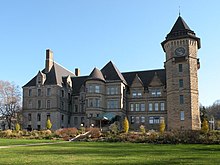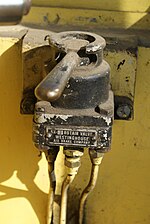
George Westinghouse Jr. was an American entrepreneur and engineer based in Pennsylvania who created the railway air brake and was a pioneer of the electrical industry, receiving his first patent at the age of 19. Westinghouse saw the potential of using alternating current for electric power distribution in the early 1880s and put all his resources into developing and marketing it. This put Westinghouse's business in direct competition with Thomas Edison, who marketed direct current for electric power distribution. In 1911 Westinghouse received the American Institute of Electrical Engineers's (AIEE) Edison Medal "For meritorious achievement in connection with the development of the alternating current system." He founded the Westinghouse Electric Corporation in 1886.
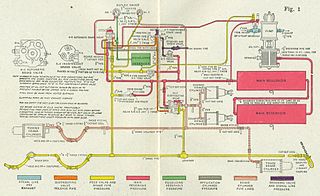
A railway air brake is a railway brake power braking system with compressed air as the operating medium. Modern trains rely upon a fail-safe air brake system that is based upon a design patented by George Westinghouse on April 13, 1869. The Westinghouse Air Brake Company was subsequently organized to manufacture and sell Westinghouse's invention. In various forms, it has been nearly universally adopted.
Westinghouse may refer to:

The vacuum brake is a braking system employed on trains and introduced in the mid-1860s. A variant, the automatic vacuum brake system, became almost universal in British train equipment and in countries influenced by British practice. Vacuum brakes also enjoyed a brief period of adoption in the United States, primarily on narrow-gauge railroads. Their limitations caused them to be progressively superseded by compressed air systems starting in the United Kingdom from the 1970s onward. The vacuum brake system is now obsolete; it is not in large-scale usage anywhere in the world, other than in South Africa, largely supplanted by air brakes.
Rail transport terms are a form of technical terminology applied to railways. Although many terms are uniform across different nations and companies, they are by no means universal, with differences often originating from parallel development of rail transport systems in different parts of the world, and in the national origins of the engineers and managers who built the inaugural rail infrastructure. An example is the term railroad, used in North America, and railway, generally used in English-speaking countries outside North America and by the International Union of Railways. In English-speaking countries outside the United Kingdom, a mixture of US and UK terms may exist.

Main components found on a typical steam locomotive include:

ZF Friedrichshafen AG, also known as ZF Group, originally Zahnradfabrik Friedrichshafen, and commonly abbreviated to ZF, is a global technology company that supplies systems for passenger cars, commercial vehicles and industrial technology. It is headquartered in Friedrichshafen, in the south-west German state of Baden-Württemberg. Specializing in engineering, it is primarily known for its design, research and development, and manufacturing activities in the automotive industry and is one of the largest automotive suppliers in the world. Its products include driveline and chassis technology for cars and commercial vehicles, along with specialist plant equipment such as construction equipment. It is also involved in the rail, marine, defense and aviation industries, as well as general industrial applications. ZF has 168 production locations in 32 countries with approximately 165,000 (2022) employees.
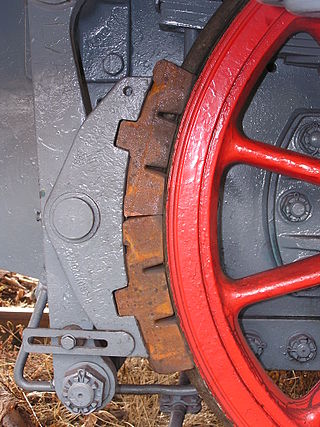
A railway brake is a type of brake used on the cars of railway trains to enable deceleration, control acceleration (downhill) or to keep them immobile when parked. While the basic principle is similar to that on road vehicle usage, operational features are more complex because of the need to control multiple linked carriages and to be effective on vehicles left without a prime mover. Clasp brakes are one type of brakes historically used on trains.

Union Switch & Signal was an American company based in Pittsburgh, Pennsylvania, which focused on railway signaling equipment, systems and services. The company was acquired by Ansaldo STS in 1988, operating as a wholly-owned company until January 2009, when US&S was renamed "Ansaldo STS USA" to operate as a subsidiary of Ansaldo in the Americas and Asia.
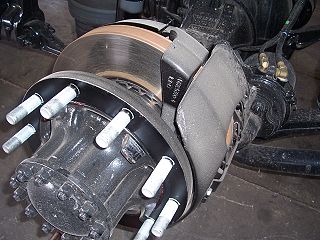
An air brake or, more formally, a compressed-air-brake system, is a type of friction brake for vehicles in which compressed air pressing on a piston is used to both release the parking/emergency brakes in order to move the vehicle, and also to apply pressure to the brake pads or brake shoes to slow and stop the vehicle. Air brakes are used in large heavy vehicles, particularly those having multiple trailers which must be linked into the brake system, such as trucks, buses, trailers, and semi-trailers, in addition to their use in railroad trains. George Westinghouse first developed air brakes for use in railway service. He patented a safer air brake on March 5, 1872. Westinghouse made numerous alterations to improve his air pressured brake invention, which led to various forms of the automatic brake. In the early 20th century, after its advantages were proven in railway use, it was adopted by manufacturers of trucks and heavy road vehicles.
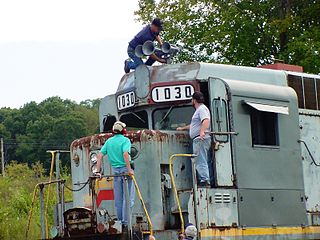
A train horn is an air horn used as an audible warning device on diesel and electric-powered trains. Its primary purpose is to alert persons and animals to an oncoming train, especially when approaching a level crossing. They are often extremely loud, allowing them to be heard from great distances. They are also used for acknowledging signals given by railroad employees, such as during switching operations. For steam locomotives, the equivalent device is a train whistle.
The electro-pneumatic brake system on British mainline railway trains was introduced in 1950 and remains the primary braking system for multiple units in service today, although London Transport underground trains had been fitted with EP brakes since the 1920s. The Southern Region of British Railways operated a self-contained fleet of electric multiple units for suburban and middle-distance passenger trains. From 1950, an expansion of the fleet was undertaken and the new build adopted a braking system that was novel in the UK, the electro-pneumatic brake in which compressed air brake operation was controlled electrically by the driver. This was a considerable and successful technical advance, enabling a quicker and more sensitive response to the driver's operation of brake controls.

Knorr-Bremse AG is a German manufacturer of braking systems for rail and commercial vehicles that has operated in the field for over 110 years. Other products in Group's portfolio include intelligent door systems, control components, air conditioning systems for rail vehicles, torsional vibration dampers, and transmission control systems for commercial vehicles. In 2022, the Group's workforce of over 31,000 achieved worldwide sales of EUR 7.15 billion.
Electronically controlled pneumatic brakes are a type of railway braking systems.

Westinghouse Air Brake Technologies Corporation, commonly known as Wabtec, is an American company formed by the merger of the Westinghouse Air Brake Company (WABCO) and MotivePower Industries Corporation in 1999. It is headquartered in Pittsburgh, Pennsylvania.
WABCO Holdings, Inc. was a U.S.-based provider of electronic braking, stability, suspension and transmission automation systems for heavy-duty commercial vehicles. In 2007, the Vehicle Control Systems was spun off as WABCO Holdings, Inc., an American provider of electronic braking, stability, suspension and transmission automation systems for heavy duty commercial vehicles. Their products are present in many commercial vehicles such as trucks, buses, trailers and off-highway vehicles but to only fill the niche roles. WABCO was acquired by ZF Friedrichshafen in May 2020.
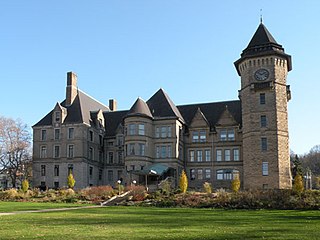
The Westinghouse Air Brake Company General Office Building in Wilmerding, Pennsylvania is a building from 1890. It was listed on the Pittsburgh History and Landmarks Foundation in 1975, National Register of Historic Places in 1987. Originally built as an office building for the Westinghouse Air Brake Company, it housed the George Westinghouse Museum from 2006 to 2016. In 2016 it was sold to the Priory Hospitality Group with the intention of being developed into a boutique hotel. However, the 2020 global pandemic affected those plans and it was announced in November 2021 that the building will be used for an art academy and to house classrooms for the Westighouse ArtsAcademy, a nearby high school.
Jacobs Vehicle Systems, Inc. is an American company that engineers, develops and manufacturers commercial vehicle retarding and valve actuation technologies. The company produces light-duty, medium-duty, and heavy-duty engine brakes, recreational vehicle exhaust brakes, aftermarket parts and tune-up kits to heavy-duty diesel engine manufacturers in its domestic market in America, as well as in Asia and Europe. The company was incorporated in 1990 and is based in Bloomfield, Connecticut. Jacobs Vehicle Systems, Inc. operates as a subsidiary of Altra Industrial Motion Corporation. On 9 February 2022, Cummins, Inc. announced an agreement to acquire Jacobs Vehicle Systems from Altra.
Haulpak was a very successful line of off-highway mining trucks. The name was used from 1953 until around 1999; the line continues under the Komatsu name. The name was adopted as Wabco Haulpak when R. G. LeTourneau's business was bought by Wabco, and the Haulpak name continued through Wabco's purchase by American Standard, the operation's purchase by Dresser Industries, the merger into Komatsu-Dresser, and for a time after Komatsu took over complete ownership from Dresser.
Aventics is a manufacturer of pneumatic components and systems with facilities in Laatzen, Germany; Bonneville, France; Lexington, United States; Eger, Hungary; and Changzhou, China. The Lexington pneumatics facility manufactures pneumatic valves, pneumatic cylinders, directional control valves, pressure control valves, electro-pneumatic valves, solenoid valves, pneumatic fittings, flow controls, actuators, marine propulsion controls and more.
